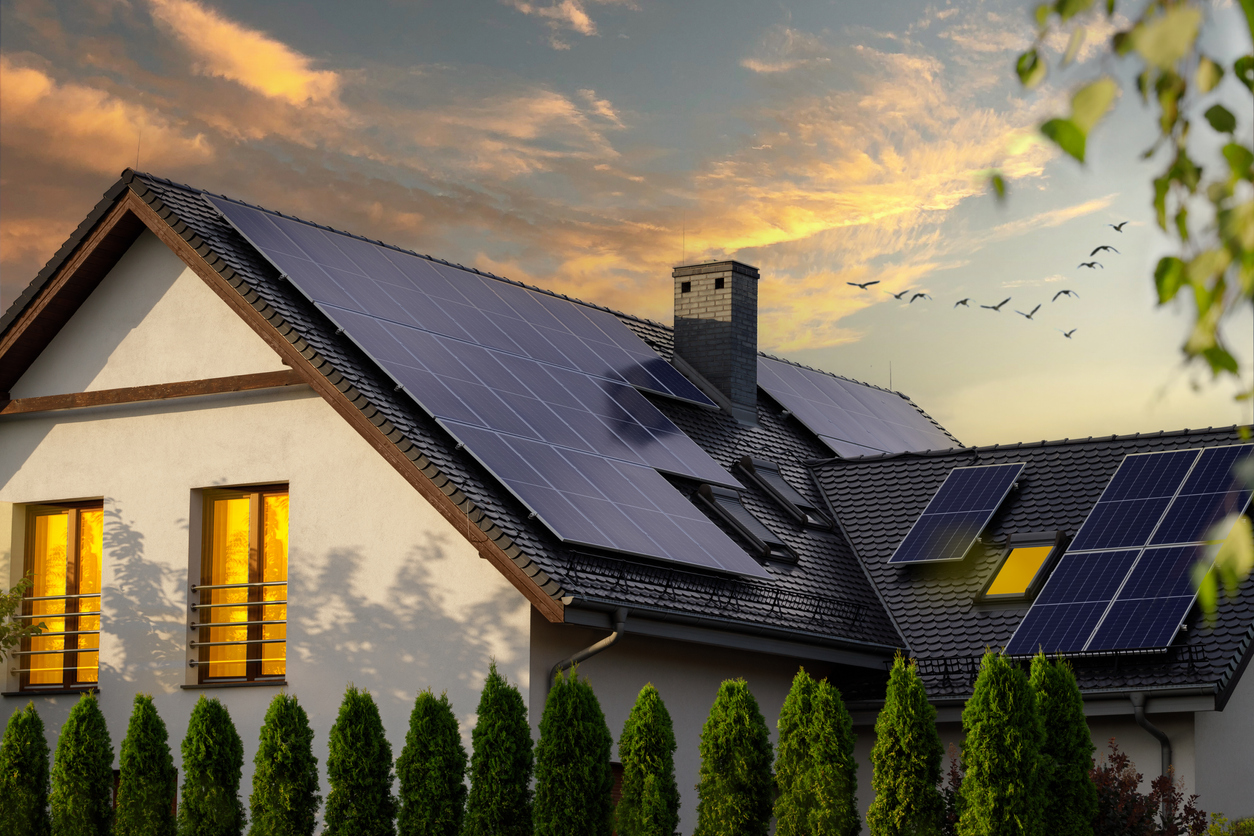Is Your Home Energy-Efficient? 6 Red Flags To Watch Out For
Share story

Night view of a beautiful white house with solar panels.
Going green can save our earth, which is why we recycle cans and fill up reusable water bottles. However, much heavier costs might be dampening your wallet if the home you are in isn’t energy-efficient.
The truth is old houses are not so energy efficient, but even newer construction could have design flaws that make them less energy efficient, too. And since no one wants high electric bills, here are some signs to help you spot the signs that a home isn’t as green as it could be—and what to do to fix it.
1. Cold walls and doors
If you can see light under doors and feel drafts through windows, your home may be inefficient. However, if the house you are looking at has old, antique walls that add to its appeal, you might have to overlook this problem. It’s preferable to live comfortably while saving hundreds of dollars on energy bills by installing new insulation and weatherstripping, which can eliminate drafts and cracks in older homes.
2. Single-pane windows
Although tightly sealed windows and doors help greatly, you will still feel a chill if the glass is single-pane. Single-pane windows, in general, do not provide much insulation, so you will surely feel the cold. If you have narrow windows in an older home, it is recommended that you use draft proofing or secondary glazing to improve the efficiency of your windows.
3. Old appliances

Kitchen filled with old appliances.
Older stoves and refrigerators may not have the Energy Efficient Label and are deemed inefficient energy users. Newer appliances will be far better because energy-efficient standards have only increased over the years. Still, there’s no reason to throw away a perfectly excellent dishwasher if it’s still in good working order, so wait for the appliance’s life cycle to end before purchasing an energy-efficient-rated model.
4. Dusty air conditioner (AC) vents
Dust around air-conditioning vents is not a cleaning concern; it is an energy one. In an ideal world, the air conditioning vents you see should be completely sealed, with no dust coming in or out. However, streaks surrounding the vents most likely suggest that the unit isn’t working properly due to leaky ducts, and you are losing cool air as a result.
5. Rusty compressors
The AC compressor is normally hidden outside the house, but a savvy buyer will look for it. The reason for this is that an old system may have visible rust on the components, and if there is water under it, it usually signifies the system is older and has leaks.
6. Signs of rodents
While you are unlikely to see actual mice racing through an open house, it’s a good idea to look for indicators of rodents and other creepy crawlies. Pests will increase significantly in a property that has not been weatherized, so check inside the pantry or kitchen cabinets. Look for chewing and droppings as well. Poor insulation in a home allows rodents and other pests to nest and build tunnels, making entrance to the residence easier.



